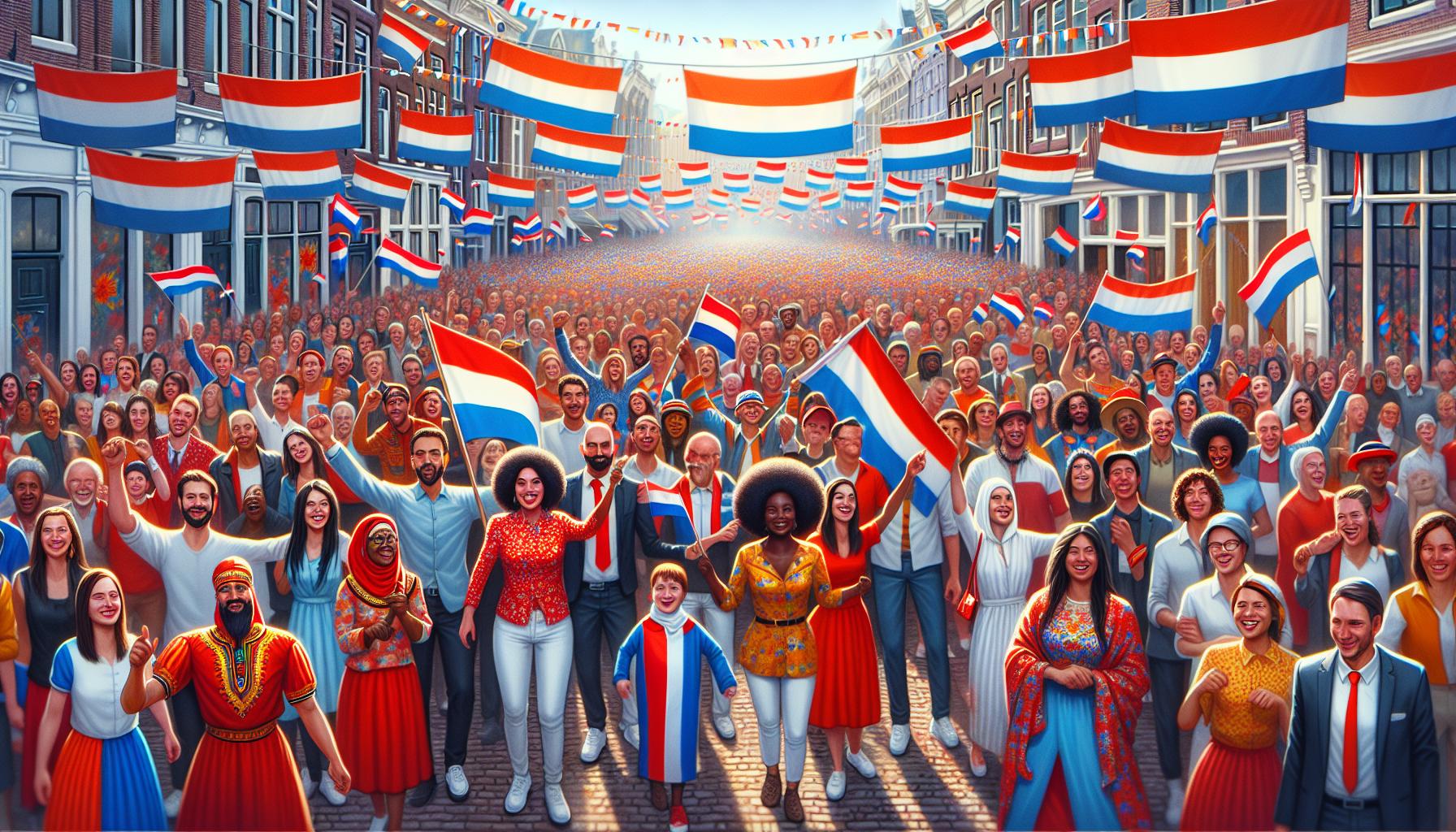When I stumbled upon the term bandeira:0cbyf0jmghc= holanda, I was intrigued by its unique combination of letters and the cultural significance behind it. This phrase, often associated with the Dutch flag, opens a window into the rich history and identity of the Netherlands. It’s fascinating how something as simple as a flag can encapsulate a nation’s values, heritage, and even its artistic expressions.
As I explored further, I discovered how this term connects to various aspects of Dutch culture, from its vibrant art scene to its strong maritime history. Understanding bandeira:0cbyf0jmghc= holanda not only sheds light on the visual symbols of the Netherlands but also invites us to appreciate the stories woven into its fabric. Join me as I delve deeper into this captivating topic and uncover what makes it so significant.
Key Takeaways
- Cultural Significance: The term bandeira:0cbyf0jmghc= holanda symbolizes a deep connection to the Dutch flag, representing national pride, heritage, and identity.
- Historical Background: Originating in the 16th century, the Dutch flag reflects the nation’s fight for independence and has evolved in its color scheme over time.
- Symbolism: The flag’s red, white, and blue colors convey themes of bravery, purity, loyalty, and the maritime legacy, resonating with the collective memory of the Dutch people.
- Artistic Influence: The Dutch flag inspires various forms of artistic expression, seen in paintings and designs that celebrate the nation’s cultural heritage and values.
- Community Engagement: National events like King’s Day and Remembrance Day prominently feature the flag, reinforcing unity and collective identity among citizens and the diaspora.
Bandeira:0cbyf0jmghc= Holanda
Bandeira:0cbyf0jmghc= Holanda signifies a meaningful connection to the Dutch flag, specifically reflecting its colors of red, white, and blue. This flag serves as an emblem of national pride and identity for the Netherlands. I find it fascinating how this symbol not only showcases the country’s rich history but also embodies its cultural values, influencing artistic expressions and collective memory.
The Dutch flag’s design traces back to the 16th century, originally used by Prince William of Orange during the struggle for independence against Spanish rule. It has evolved over the years, becoming a representation of unity and resilience for the Dutch people. This connection to history prompts me to explore how the flag’s symbolism permeates various aspects of Dutch culture, including its art movements, literature, and even maritime adventures.
Culturally, the flag plays a pivotal role during national celebrations and events. Flag display during festivals or national holidays reinforces the connection between identity and heritage. The striking colors evoke a sense of belonging, inspiring pride among citizens and the Dutch diaspora worldwide.
While delving into the maritime history, I notice that the Dutch flag often served on international waters, representing Dutch trade and naval power. These historical trade routes established the Netherlands as a key player in global commerce, impacting art and culture in myriad ways. Artists frequently incorporated nautical themes that reveal the profound connection between the flag and the nation’s esteemed maritime legacy.
History and Origin

The term “bandeira:0cbyf0jmghc= holanda” closely ties to the Dutch flag, a vital emblem reflecting the Netherlands’ rich heritage. The flag’s colors and design tell a story of unity, pride, and resilience throughout history.
Cultural Significance
The Dutch flag epitomizes national identity and values, woven deeply into the fabric of daily life and traditional celebrations. Its presence during events such as King’s Day and Remembrance Day reinforces collective memory and national pride. The flag also inspires various artistic expressions, from paintings to modern art, symbolizing the connection between Dutch culture and its maritime legacy. Additionally, the flag serves as a beacon of unity, particularly for the Dutch diaspora, fostering a sense of belonging across borders.
Historical Context
The design of the Dutch flag originated in the late 16th century, coinciding with the fight for independence from Spanish rule. Initially featuring the colors orange, white, and blue, the orange hue eventually faded in favor of red, red, white, and blue. Throughout the centuries, the flag has marked significant moments in Dutch history, such as naval triumphs and trade expansion. Its prominent use in maritime trade highlighted the Netherlands’ influential role in global commerce, shaping its cultural and historical narrative. The flag continues to represent the enduring spirit of the Dutch people, through which generations identify and connect to their profound past.
Features of Bandeira:0cbyf0jmghc= Holanda

Bandeira:0cbyf0jmghc= Holanda reflects essential characteristics of the Dutch flag, encompassing visual elements and profound symbolism that represent the Netherlands.
Visual Elements
The Dutch flag consists of three horizontal stripes in the colors red, white, and blue. The top stripe features a vibrant red hue, symbolizing bravery and the blood shed for freedom. The central white stripe stands for peace and honesty, serving as a backdrop for national unity. The bottom blue stripe represents loyalty and vigilance.
The flag’s design traces back to the 16th century, demonstrating a historical transition from the original orange, white, and blue. The current colors were officially adopted in 1937, solidifying the nation’s identity. Flying the flag at various events highlights the Dutch people’s pride in their visual heritage, reinforcing the connection to their history.
Symbolism
Bandeira:0cbyf0jmghc= Holanda encompasses deep-rooted symbolism. The red signifies courage and the fight for independence, while the white reflects the purity of intentions. The blue represents the Dutch maritime legacy, emphasizing loyalty to the country and its people.
During national celebrations, such as King’s Day and Remembrance Day, the flag evokes collective memories and unites citizens in shared pride. The flag also serves as a beacon of Dutch culture and artistic expression, influencing local artists who incorporate its colors and themes in their works. This connection to heritage and identity plays a crucial role in fostering a sense of belonging among the Dutch people and the diaspora.
Applications and Uses

The term “bandeira:0cbyf0jmghc= holanda” manifests in various facets of Dutch culture, illustrating its relevance across disciplines. Its presence in art and community gatherings showcases a rich tapestry of national pride and identity.
In Art and Design
Using the Dutch flag’s colors—red, white, and blue—in art and design highlights the principles of courage, peace, and loyalty. Artists incorporate these colors in paintings, sculptures, and graphic designs to celebrate Dutch heritage. The flag’s imagery appears in contemporary artworks and traditional crafts, ranging from textiles to ceramics. For instance, Dutch painters like Piet Mondrian drew inspiration from the flag, using its bold colors and geometric forms to create iconic works that resonate with national pride.
In Community Events
The flag plays a central role in community events, reinforcing a collective identity among citizens and their diaspora. During King’s Day, celebrations feature the flag prominently, adorning streets, homes, and public spaces. This day of national pride fosters unity through parades, concerts, and festivities. Similarly, during Remembrance Day, the flag’s presence commemorates those who sacrificed for freedom, creating a space for reflection and gratitude. These events utilize the banner as a symbol of community cohesion, linking past struggles to present celebrations.
Dutch Flag and Its Profound Cultural Significance
The term bandeira:0cbyf0jmghc= holanda beautifully encapsulates the essence of the Dutch flag and its profound cultural significance. It’s not just a symbol but a vibrant representation of national pride and identity that resonates deeply with the Dutch people.
As I reflect on the flag’s rich history and its role in shaping collective memory, I realize how it connects generations through shared values and experiences. Whether during national celebrations or in artistic expressions, the colors of red, white, and blue continue to inspire unity and resilience.
Embracing this symbol allows us to appreciate the intricate tapestry of Dutch heritage and the enduring spirit of its people. The flag stands as a testament to their journey and the stories that bind them together.

